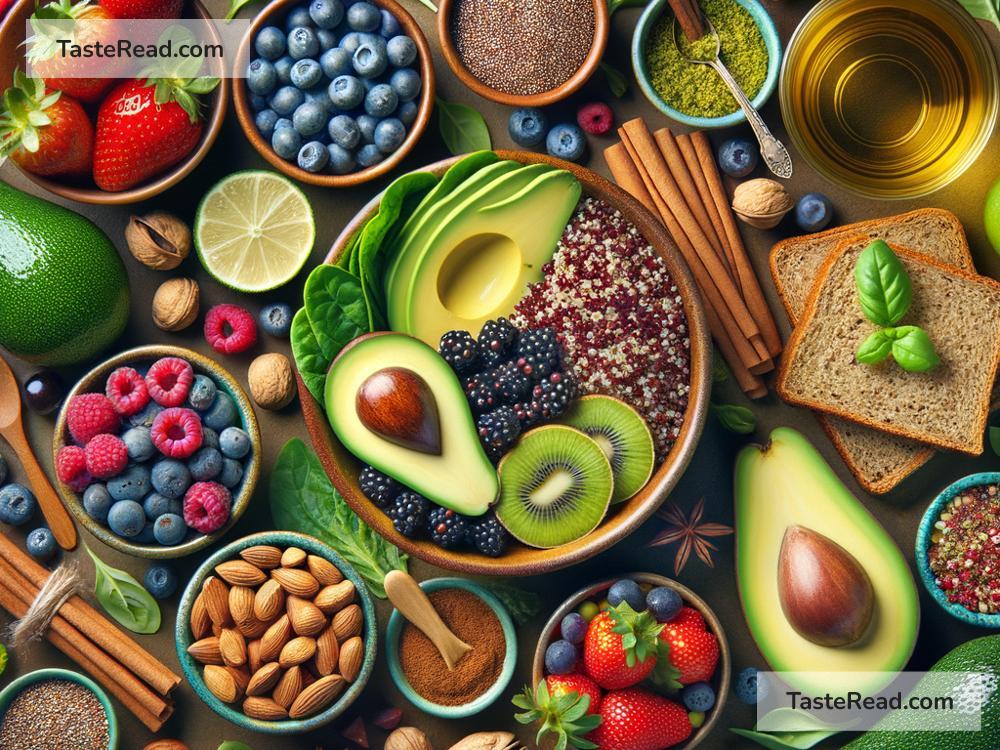Eat Your Way to Better Blood Sugar: Foods for Improving Glycemic Control
Managing blood sugar levels is essential, especially for people with diabetes or those at risk of developing it. Even if you don’t have diabetes, keeping your blood sugar within healthy ranges can help you stay energized, maintain a healthy weight, and reduce the risk of other health problems like heart disease.
The good news is that the foods you choose to eat can make a big difference. Some foods can help your body process sugar more effectively, keeping blood sugar levels steady and preventing big spikes and crashes. In this blog, we’ll explore simple, everyday foods that can help improve glycemic control. Let’s dive in!
What Is Glycemic Control?
Glycemic control refers to how well your body manages blood sugar levels. When you eat carbohydrates, your body breaks them down into glucose, which provides energy for your cells. Insulin, a hormone made by your pancreas, helps your cells absorb the glucose from your blood. Good glycemic control means your blood sugar stays within a healthy range.
However, if your glycemic control isn’t good, you could experience blood sugar spikes after meals or struggle with consistently high blood sugar. Over time, this can lead to health problems, including diabetes complications.
Foods That Help Improve Glycemic Control
1. Whole Grains
Whole grains like oats, quinoa, brown rice, and whole wheat bread are great for managing blood sugar. They contain fiber, which slows down digestion and prevents quick spikes in blood sugar. Unlike refined grains (like white bread or pastries), whole grains keep you full longer and give your body more time to process the glucose.
Tip: Start your day with oatmeal or swap white rice for brown rice at dinner to make a healthier choice.
2. Non-Starchy Vegetables
Vegetables like spinach, broccoli, kale, cucumbers, and peppers have very minimal impact on blood sugar levels. They’re low in calories, rich in vitamins, and packed with fiber. Plus, they contain antioxidants that support overall health.
Tip: Fill half your plate with non-starchy vegetables at every meal for better blood sugar control.
3. Beans and Lentils
Beans, lentils, chickpeas, and black peas are excellent sources of plant-based protein and fiber. Both protein and fiber slow the digestion of carbs, helping to prevent sudden blood sugar spikes. They’re also heart-healthy and affordable.
Tip: Add beans to salads, soups, or chili, or use lentils as a base for curry dishes.
4. Nuts and Seeds
Nuts like almonds, walnuts, and pistachios, and seeds like chia and flaxseeds, provide healthy fats, protein, and fiber. These nutrients work together to regulate blood sugar levels and keep you full. Nuts are also a great option for snacking because they’re easy to carry and eat on the go.
Tip: Enjoy a handful of unsalted nuts or sprinkle chia seeds into your yogurt or smoothie for extra nutrition.
5. Fatty Fish
Fatty fish like salmon, mackerel, and sardines are rich in omega-3 fatty acids, which can help reduce inflammation in the body. While fish doesn’t contain carbohydrates, the healthy fats in it support insulin sensitivity, which helps regulate blood sugar.
Tip: Aim to eat fatty fish twice a week. Grilled salmon with a side of veggies is a great lunch or dinner option.
6. Low-Glycemic Fruits
Not all fruits are created equal when it comes to blood sugar. Low-glycemic fruits like berries (blueberries, strawberries, raspberries), apples, and pears have less impact on blood sugar than tropical or high-sugar fruits like pineapple or mango.
Tip: Snack on fresh berries or slice up an apple for an easy and blood-sugar-friendly treat.
7. Dairy or Dairy Alternatives
Unsweetened yogurt, milk, or other dairy options like almond or soy milk can help regulate blood sugar thanks to their protein and sometimes fat content. Avoid sugary flavored yogurts, which can cause blood sugar spikes.
Tip: Choose unsweetened Greek yogurt and add a handful of nuts or berries for a balanced snack.
8. Healthy Fats
Foods rich in healthy fats, like avocado, olive oil, and nut butters (without added sugar), can help slow digestion and improve glycemic control. Healthy fats also help you feel full and satisfied after meals.
Tip: Top your salad with avocado slices or cook with olive oil instead of butter.
Foods to Limit
While adding blood sugar-friendly foods to your diet is important, it’s equally crucial to limit foods that can harm glycemic control. These include:
- Sugary drinks like soda or sweetened coffee
- Refined carbs like white bread, pasta, and pastries
- High-fat processed foods like chips and fried snacks
Such foods cause blood sugar to spike quickly and are often low in nutrients.
Takeaways
Improving glycemic control starts with making smart food choices. Incorporate foods rich in fiber, protein, and healthy fats while minimizing sugary and processed foods. It’s not about cutting out all the foods you love but rather finding healthier ways to nourish your body.
Consistency is key! A balanced diet, regular exercise, and staying hydrated can all work together to help manage blood sugar levels over time. If you’re unsure about your diet or need personalized advice, talk to a healthcare provider or registered dietitian.
Healthy blood sugar control is achievable—and it starts at your plate!


